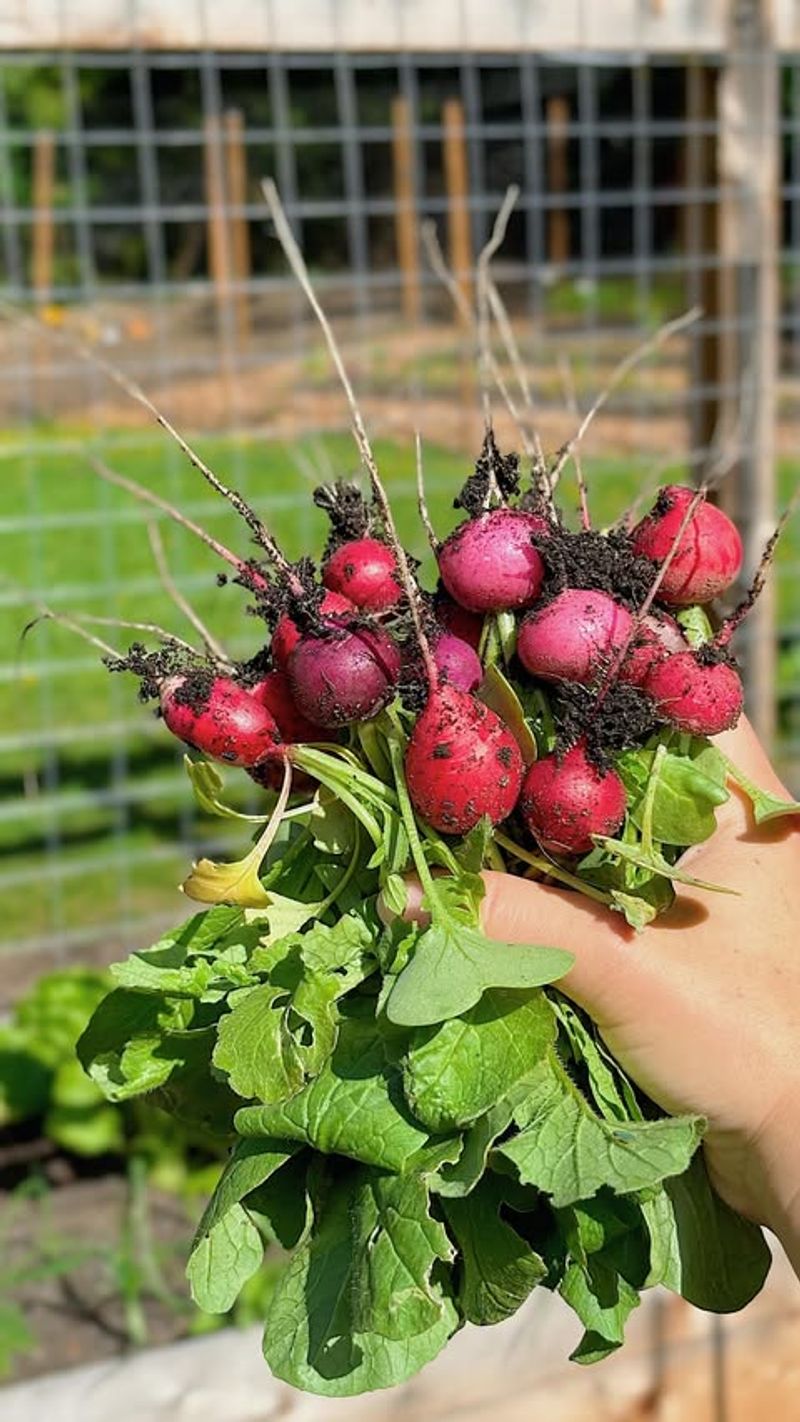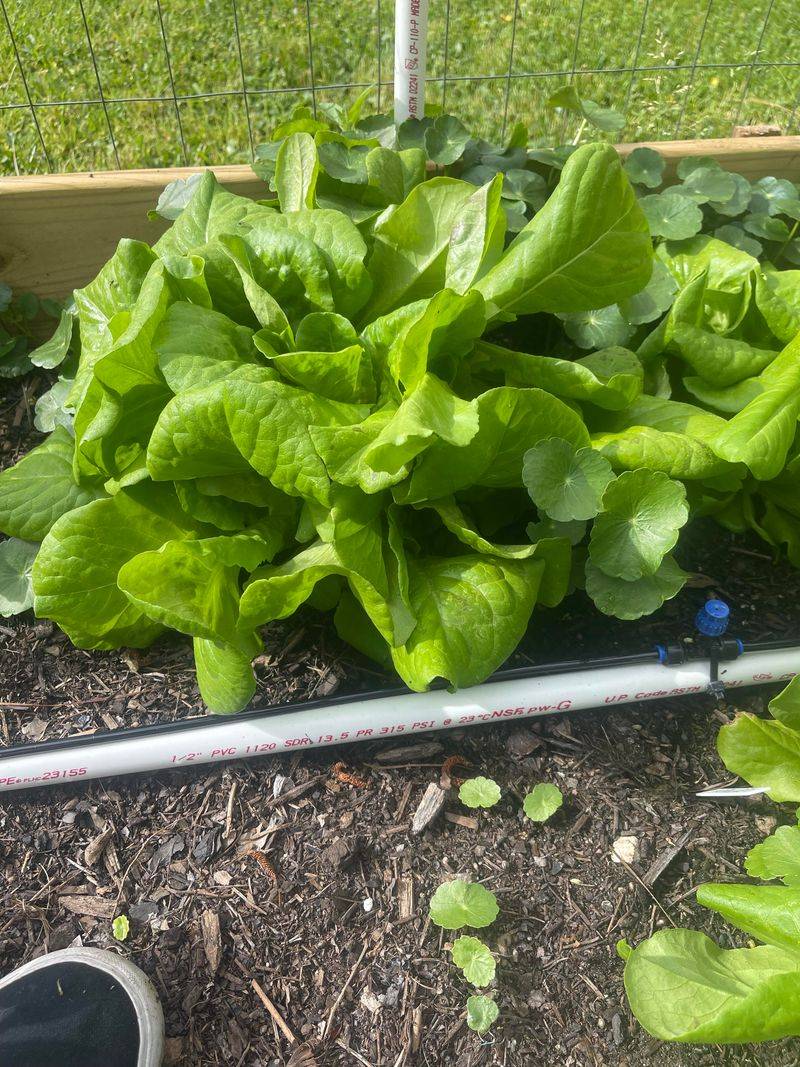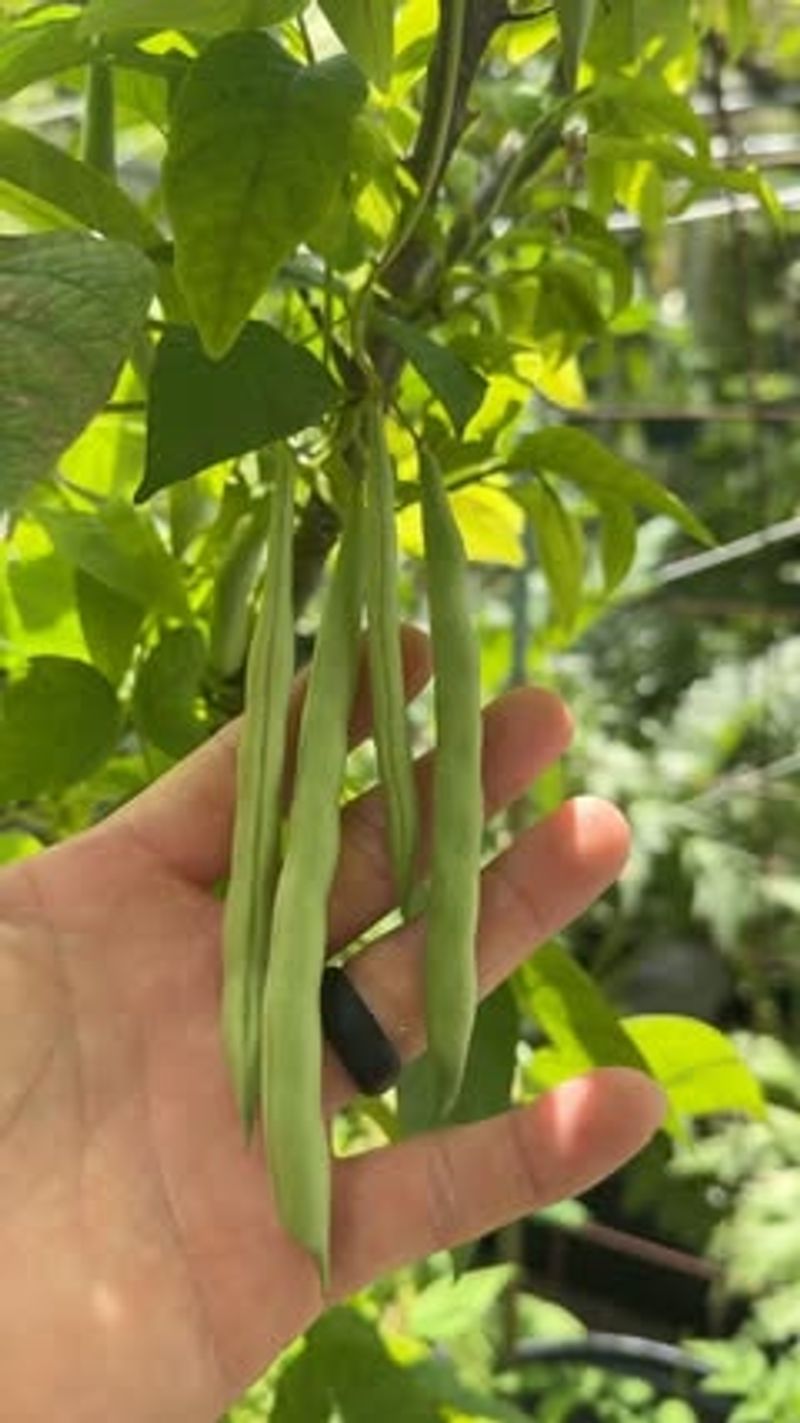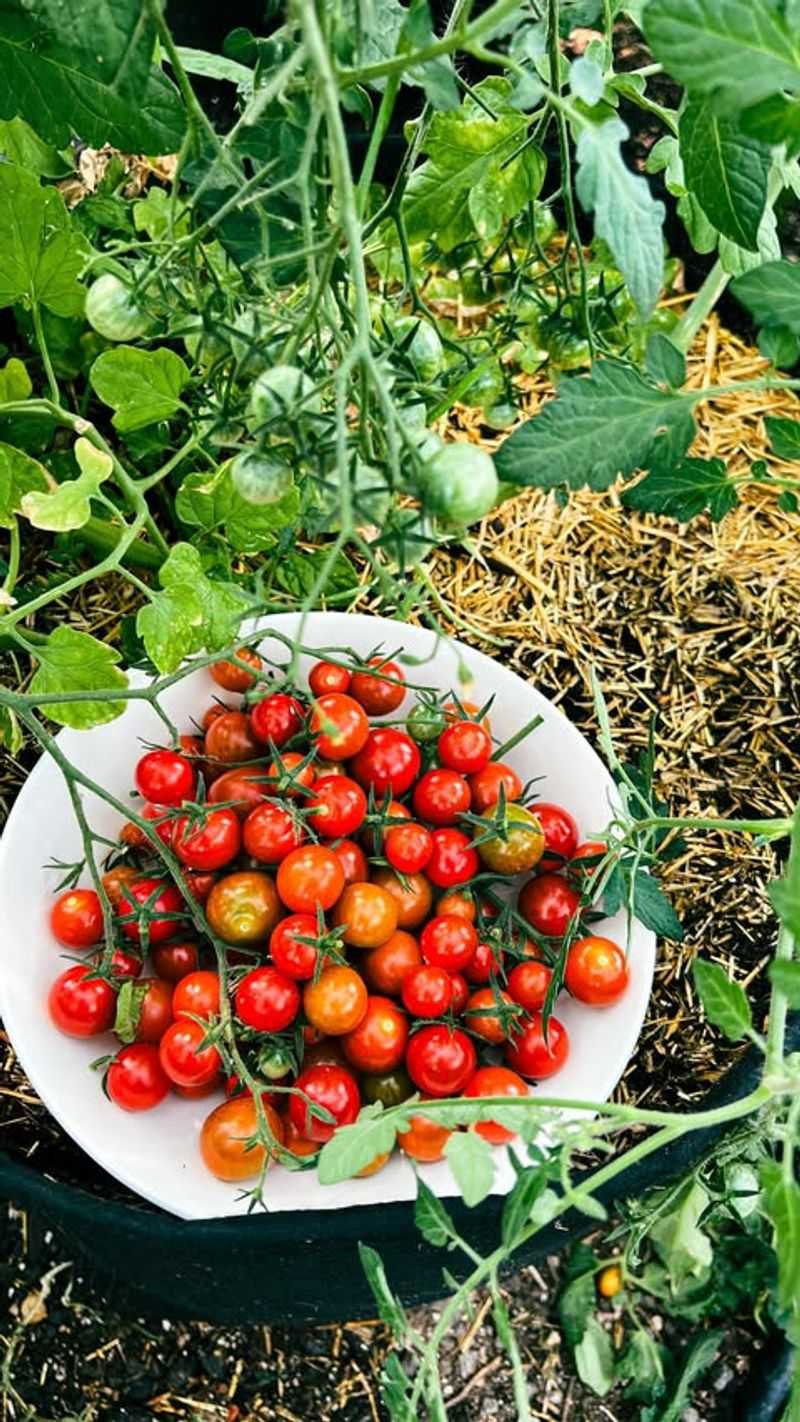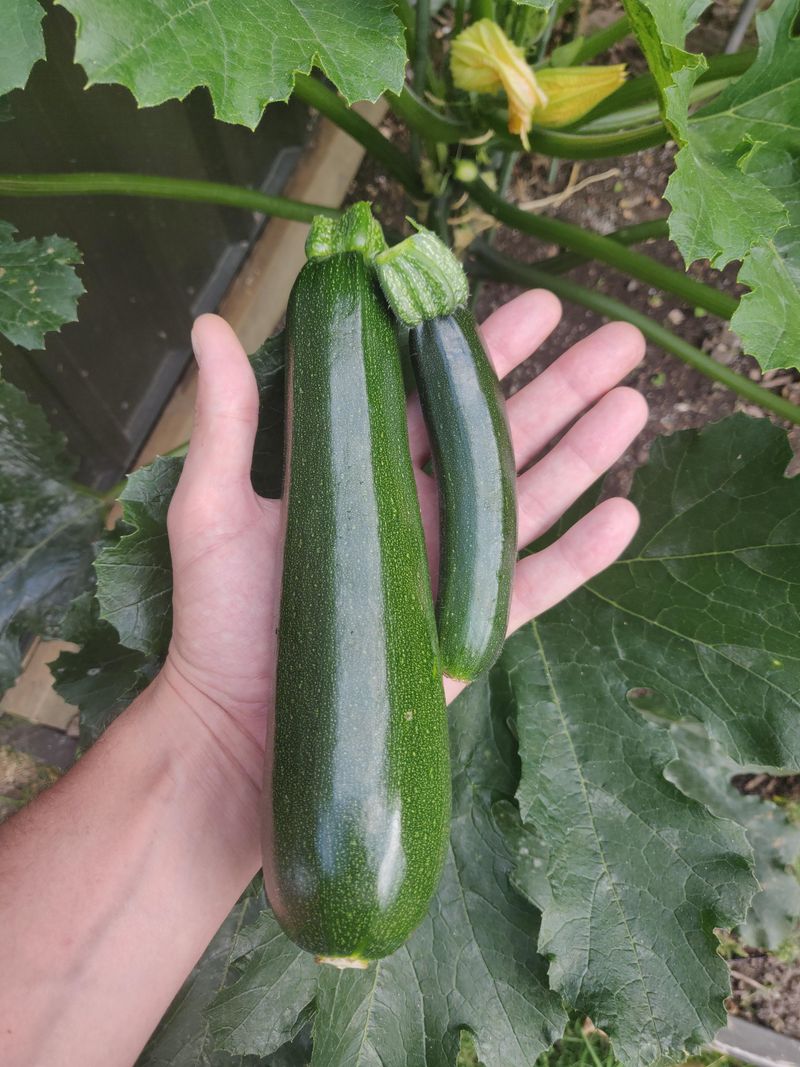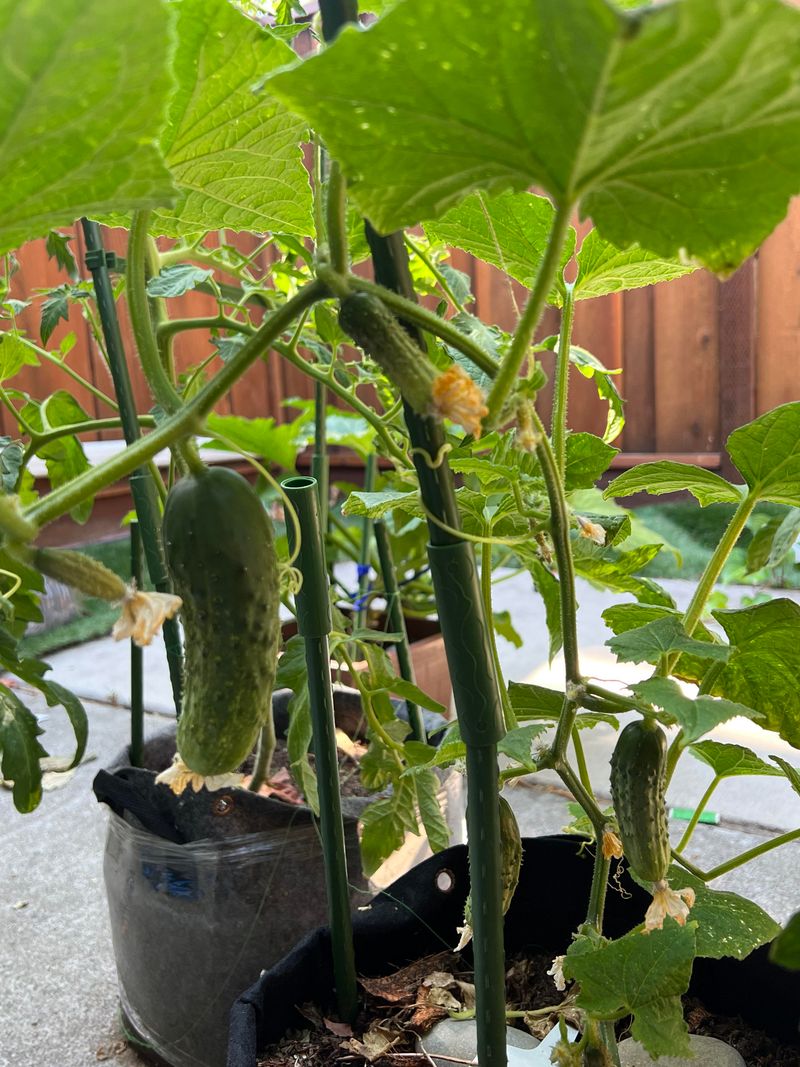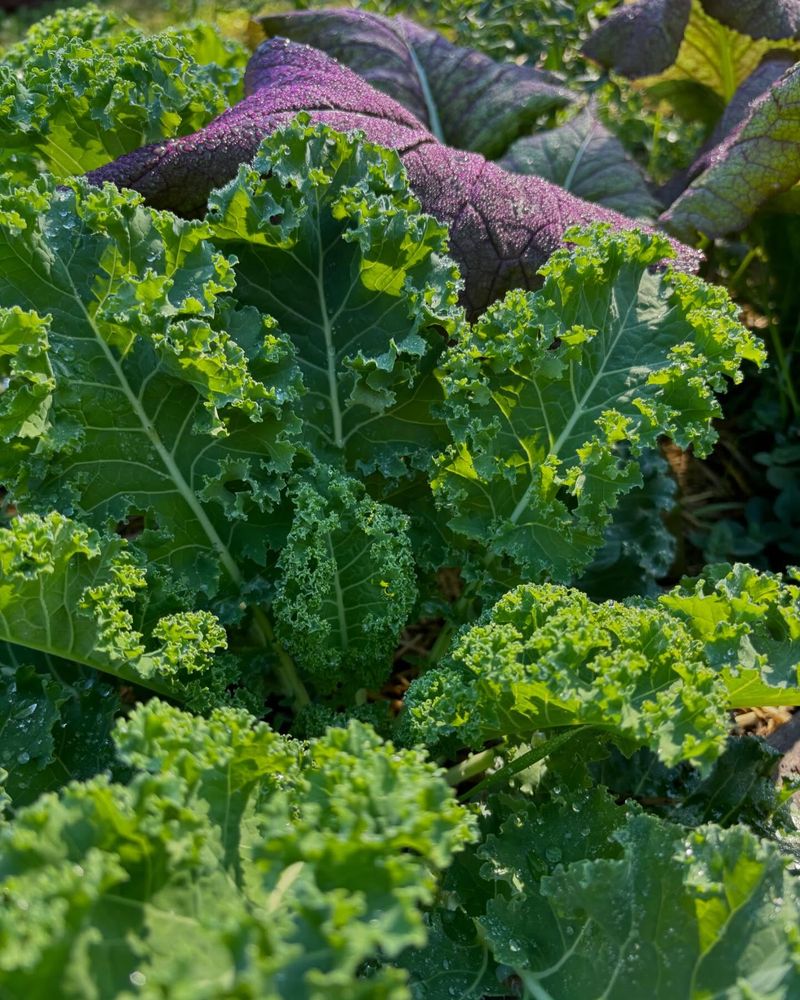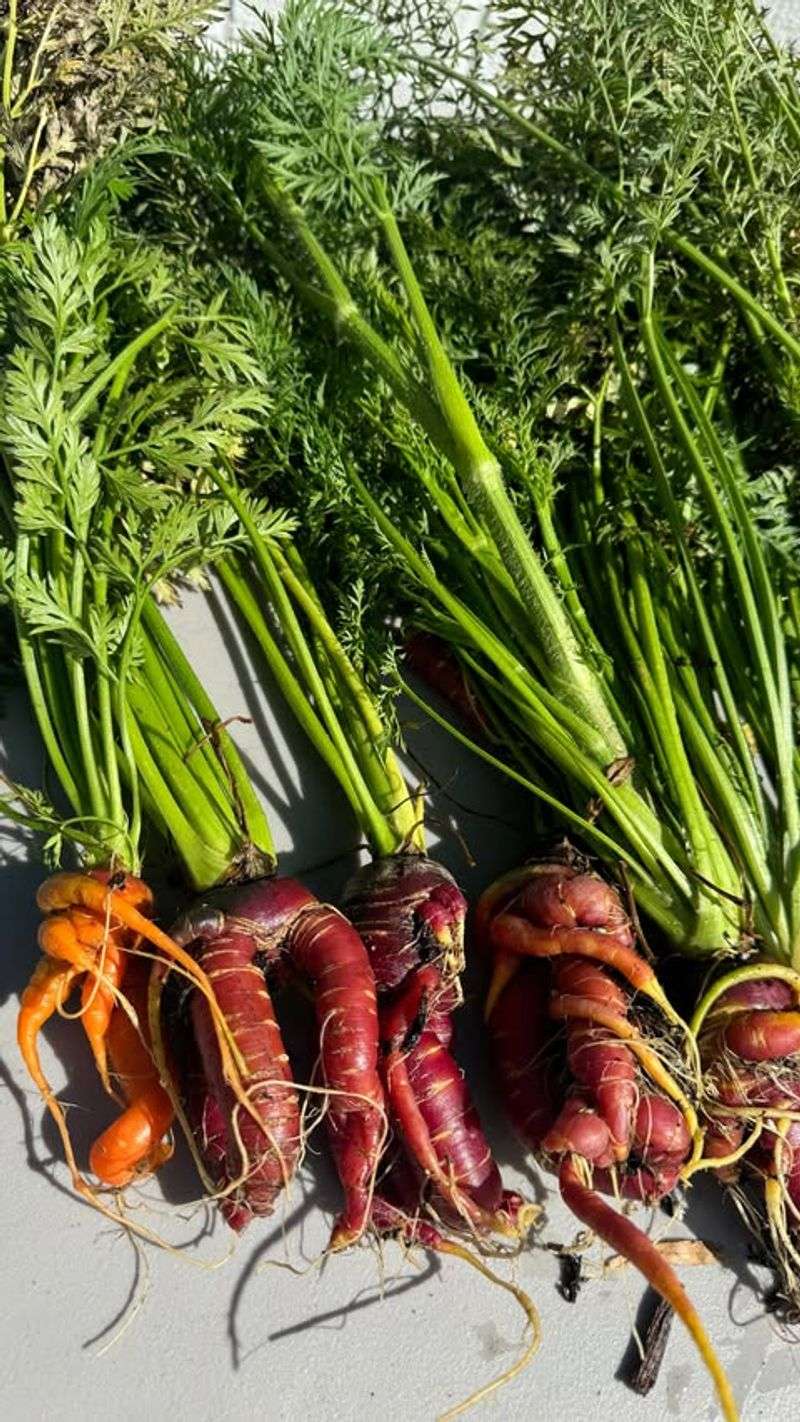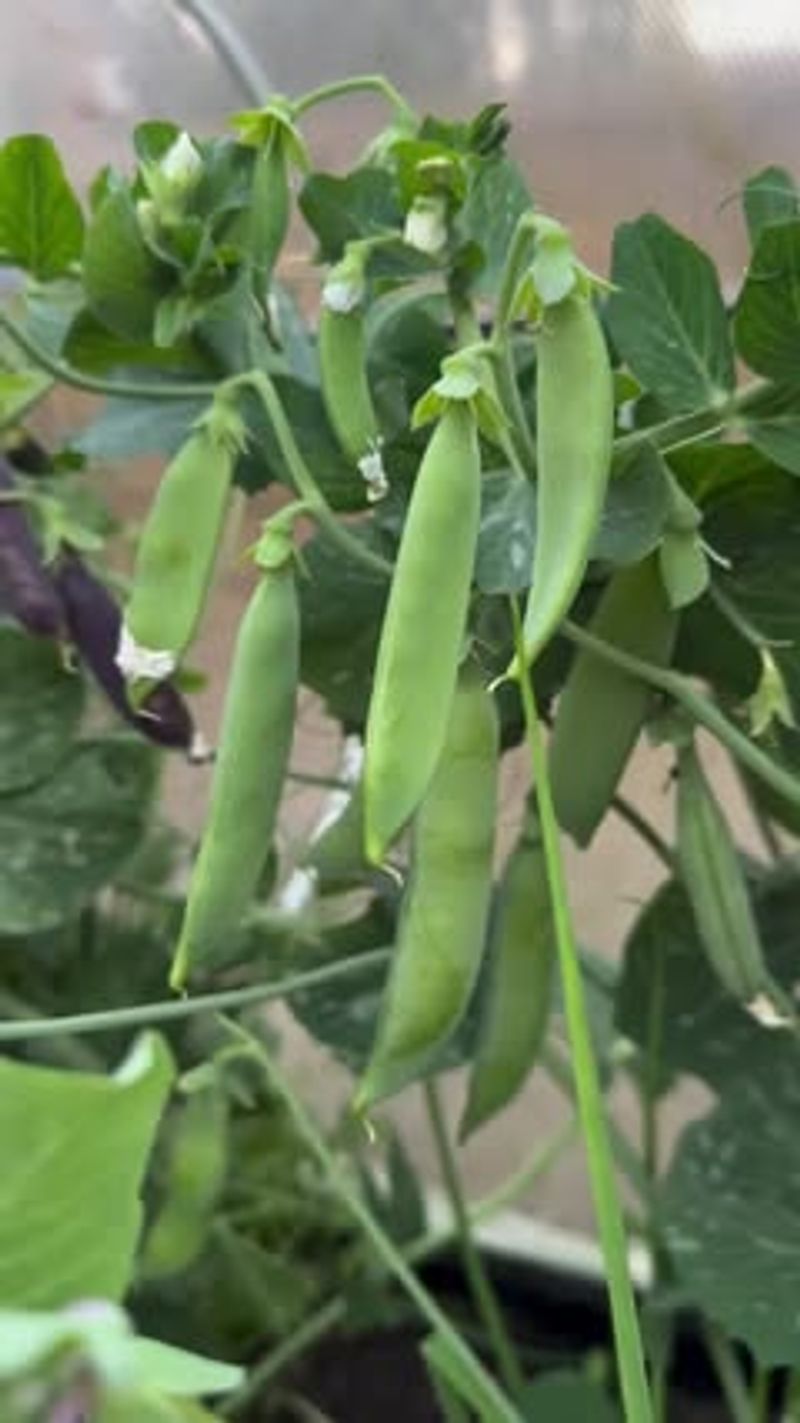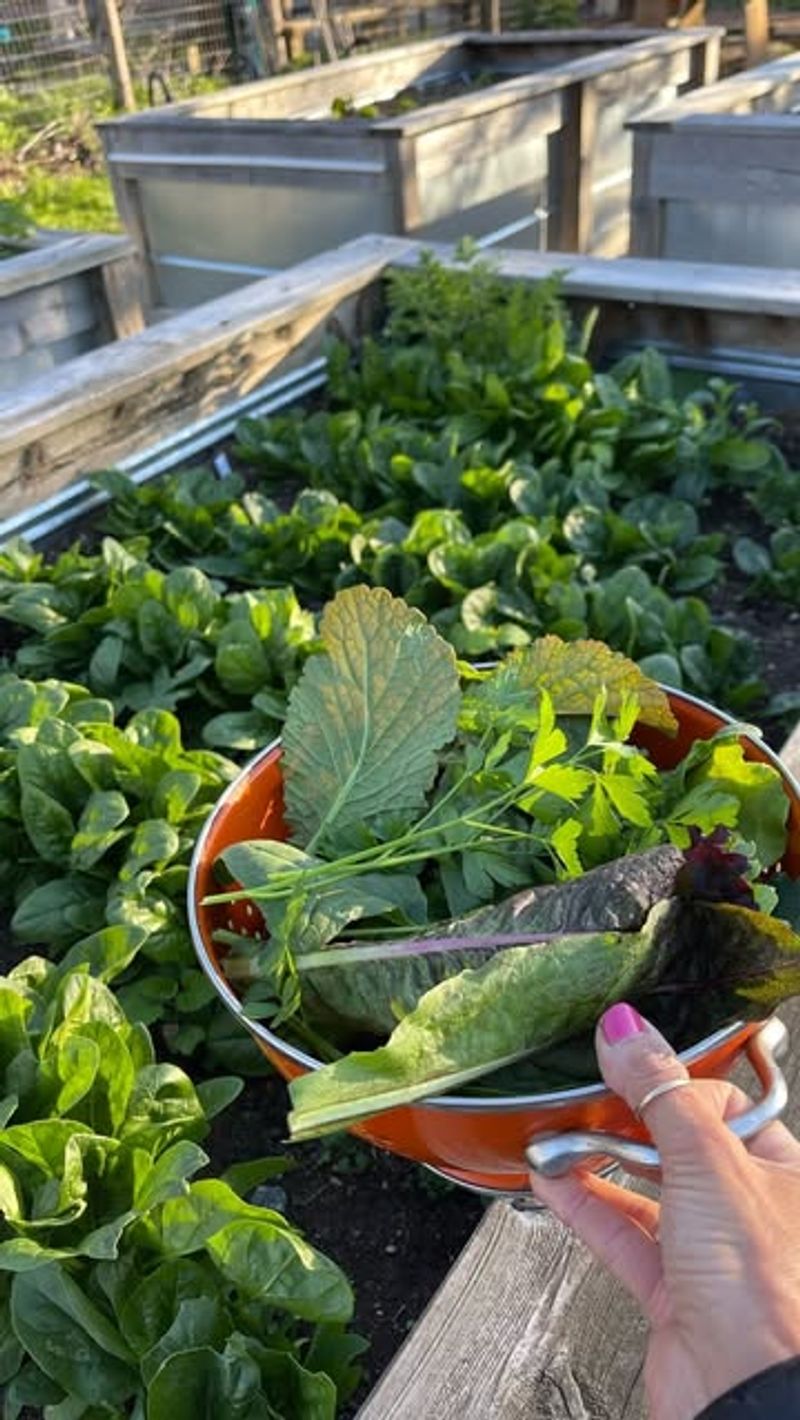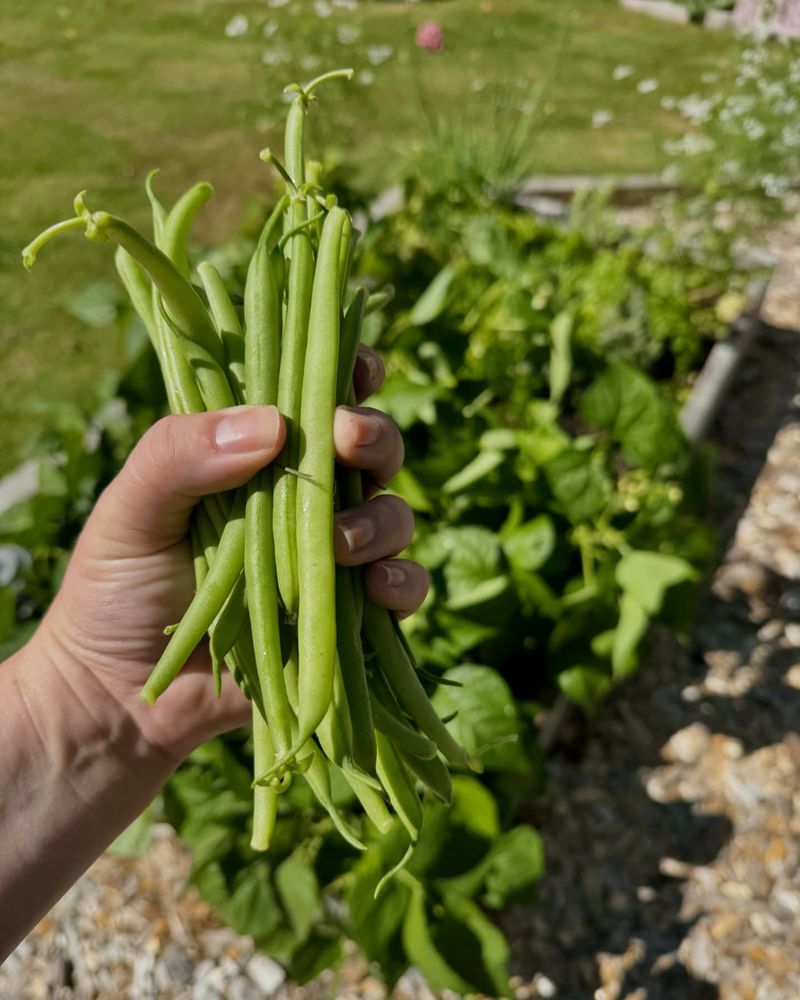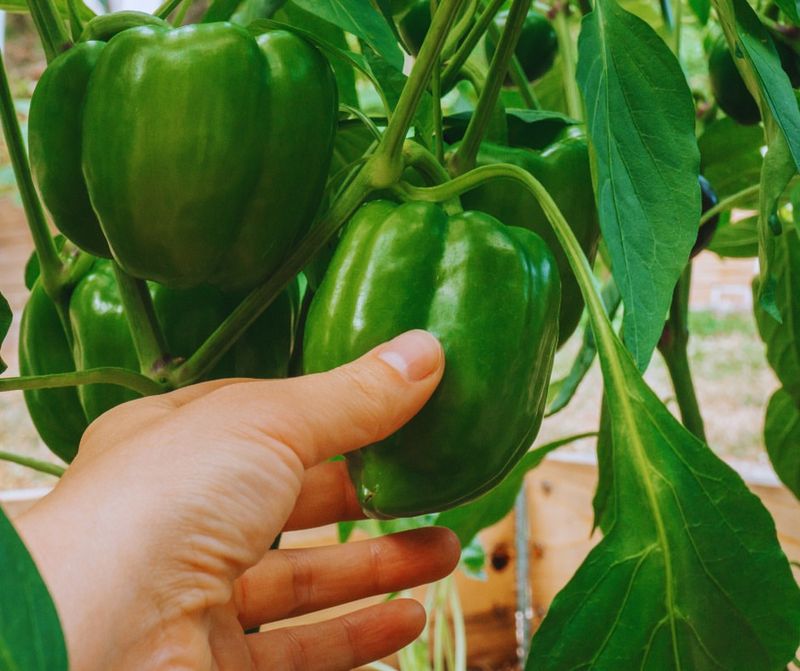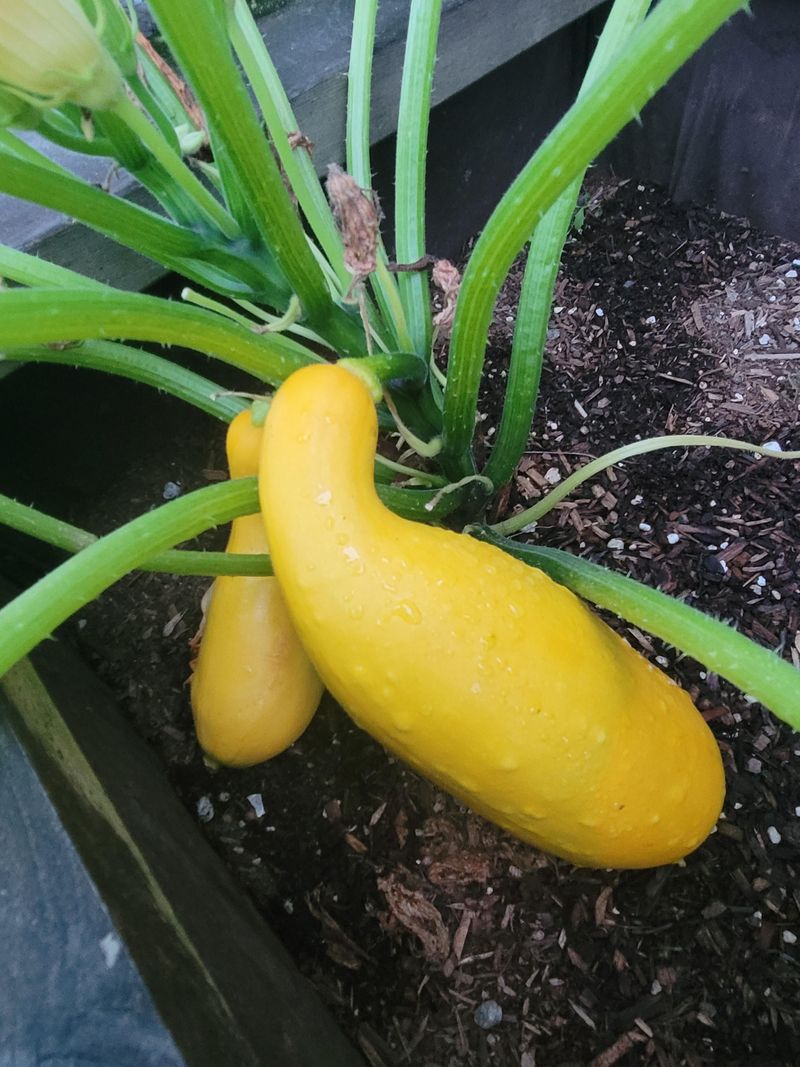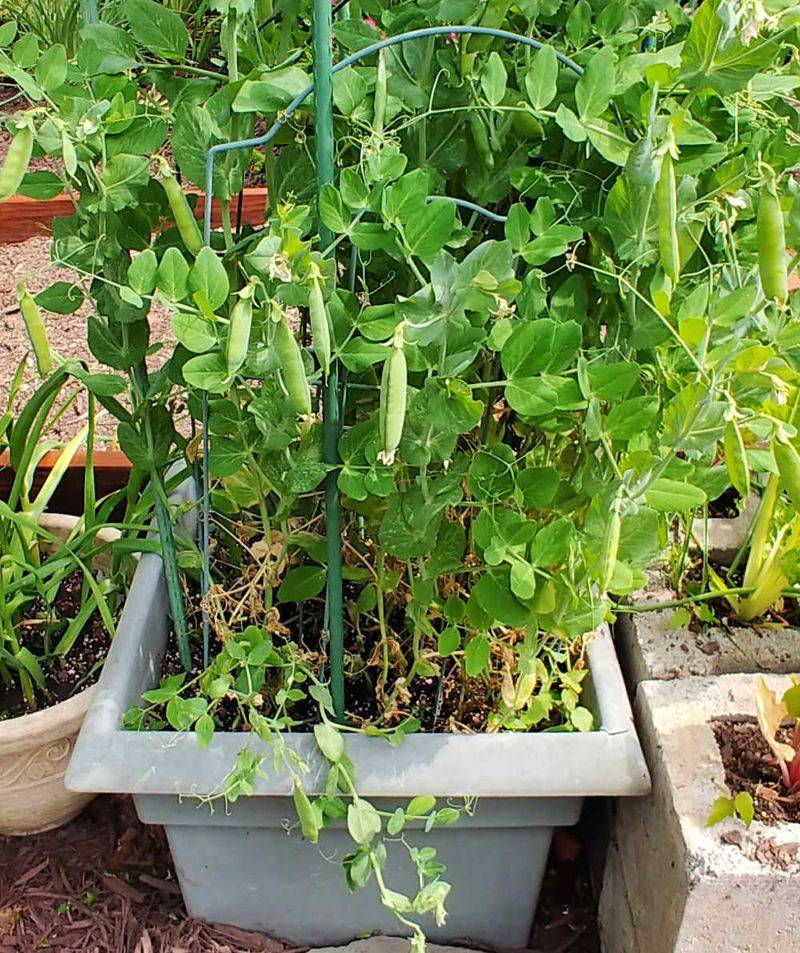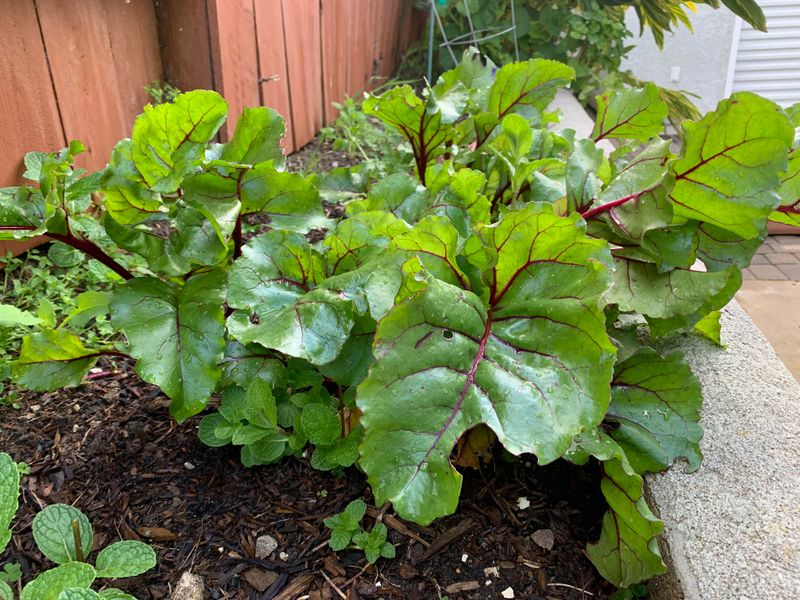Starting a vegetable garden can feel intimidating, especially if it’s your first go at growing food. But the truth is, many veggies are surprisingly low-maintenance. With a few simple steps, you’ll be harvesting your own produce in no time.
These beginner-friendly vegetables don’t need fancy tools or expert skills. They thrive with basic care, and watching them sprout builds confidence fast. Every leafy green and plump tomato is proof that you’ve got this.
Whether you’re filling raised beds or planting in pots on the balcony, these 17 easy growers are ready to perform. They’ll turn your space into a fresh-food haven with flavors that taste better because they came from your own hands.
1. Radishes
From seed to harvest in just 3-4 weeks! I remember being amazed at how quickly my first radish crop popped up when I was a total gardening newbie. They grow in almost any soil and don’t mind cool weather.
Just plant the seeds about half an inch deep, keep them watered, and watch them go. Perfect for impatient gardeners (like I was) who want quick results.
Kids especially love growing radishes because they can see success so fast.
2. Lettuce
Growing your own salad is incredibly satisfying. The seeds are tiny but sprout quickly, and you’ll have baby leaves ready for your sandwich in just a few weeks.
My favorite trick is harvesting just the outer leaves while letting the center continue growing. This ‘cut and come again’ method means one plant provides multiple harvests.
Works beautifully in containers if you’re short on space. I’ve successfully grown lettuce in everything from flowerpots to old ice cream buckets.
3. Green Beans
Last summer, I completely forgot to water my green beans during a busy week, and they still produced a fantastic crop. That’s how forgiving they are!
Choose between bush varieties (compact, no support needed) or pole beans (need a trellis but produce longer). The seeds are large and easy to handle, perfect for gardeners with less-than-steady hands.
Once they start producing, check daily – beans seem to double in size overnight and taste best when picked young.
4. Cherry Tomatoes
Sweeter and more productive than their larger cousins, cherry tomatoes practically grow themselves. A single plant in a sunny spot can provide handfuls of fruit for months.
Start with nursery seedlings rather than seeds for your first attempt. Once they get going, all they need is regular water and something to climb on.
Nothing beats the flavor of sun-warmed cherry tomatoes eaten straight from the plant. My nephew used to snack on them like candy while playing in the yard.
5. Zucchini
Famous for its almost ridiculous productivity! Two plants provided enough for my family of four plus several neighbors last year. Plant seeds directly in the garden after all danger of frost has passed.
They sprout quickly and grow with impressive speed, even when neglected. Harvest when fruits are small (6-8 inches) for the best flavor and texture.
Check plants every other day – zucchini have a habit of hiding under leaves and suddenly appearing as baseball bat-sized surprises!
6. Cucumbers
Crisp, refreshing, and surprisingly easy to grow. The vines do need something to climb on, but a simple tomato cage works perfectly for support. Regular harvesting encourages more production.
I once went on vacation for a week and came back to find cucumber monsters the size of my forearm! They love hot weather and consistent moisture.
A layer of mulch helps keep the soil damp and prevents the fruits from touching bare ground, which can cause rotting.
7. Kale
Possibly the most low-maintenance vegetable I’ve ever grown. Survives light frost and actually tastes sweeter after cold weather.
Plant in spring or fall and harvest the outer leaves as needed, leaving the center to keep producing. My kale has survived neglect, pest attacks, and even a surprise snowfall.
Productive for months on end – one planting can last from early summer through winter in milder climates. Great value for minimal effort!
8. Carrots
There’s something magical about pulling your first carrot from the soil. The tiny seeds require a bit of patience but are worth the wait. The key to success is loose, stone-free soil.
I learned this the hard way when my first crop grew into bizarre shapes after hitting rocks! Raised beds or deep containers work wonderfully.
Don’t thin the seedlings too early – wait until they’re about 2 inches tall. The thinnings make a tasty addition to salads, so nothing goes to waste.
9. Bush Peas
Sweet, crisp peas straight from the garden are nothing like store-bought ones. The compact bush varieties don’t require trellising, making them perfect for beginners.
Plant them early – they love cool weather and can handle light frost. One year I planted mine in February during a warm spell and had peas by April! Picking regularly encourages more production.
The more you harvest, the more they produce, making them a gift that keeps on giving throughout the season.
10. Spinach
Fast-growing and packed with nutrients, spinach is ideal for gardeners who want quick results. The seeds sprout in just a few days even in cool conditions.
Plant in early spring or fall – spinach bolts (goes to seed) quickly in hot weather. I’ve had success growing it in partial shade during warmer months when other spots would be too hot.
Baby leaves can be harvested just 3-4 weeks after planting. So much more flavorful than store-bought and no plastic packaging waste!
11. Bush Beans
Unlike their climbing cousins, bush beans stand on their own without support. They’re compact enough for containers yet productive enough to feed a family.
Sow seeds directly in the garden after the last frost. The large seeds are easy to handle and sprout within a week, making them gratifying for impatient gardeners like me.
My first vegetable garden featured yellow bush beans, and their cheerful color and abundant harvest got me hooked on growing food for life!
12. Bell Peppers
Start with nursery plants instead of seeds for your first attempt. They take a while to mature but require minimal care along the way. A sunny spot and regular watering are all they need.
I’ve grown beautiful peppers in containers on my patio when I didn’t have garden space.
Watching them change color as they ripen is fascinating – from green to yellow, orange, or red depending on the variety. Each color stage is edible but gets sweeter as it develops.
13. Swiss Chard
The colorful stems make this vegetable as ornamental as it is delicious. Rainbow varieties bring vibrant pinks, yellows, and oranges to the garden. Incredibly heat-tolerant and long-lasting.
My Swiss chard survived an entire summer of neglect when I broke my ankle and couldn’t tend the garden regularly. Harvest the outer leaves and it keeps producing for months.
One planting has given me greens from spring through fall, making it one of the most economical crops in my garden.
14. Scallions
Growing scallions feels like cheating – they’re just so easy! Plant them once and harvest for months by cutting just what you need and leaving the roots.
They grow well in partial shade when other vegetables might struggle. I keep a pot of them right outside my kitchen door for easy access while cooking.
Try the regrow method: use the white parts in cooking, then place the root ends in water or soil. They’ll regrow several times before needing replacement!
15. Summer Squash
Similar to zucchini but with more variety in shapes and colors. Yellow crookneck and patty pan types add visual interest to both garden and plate.
The large seeds are easy to plant directly in the garden after frost danger passes. They germinate readily even in less-than-perfect soil conditions.
Frequent harvesting is key – I check my plants every other day during peak season. Young squash are more tender and flavorful, plus picking encourages the plants to produce more.
16. Snap Peas
Sweet enough to eat straight off the vine, snap peas are a garden snacker’s delight. My kids would eat more in the garden than ever made it to the kitchen!
They do need something to climb on, but a simple trellis of string or chicken wire works perfectly. The tendrils naturally grab onto supports with minimal guidance.
Plant in early spring – they prefer cool weather and will produce for weeks before summer heat arrives. A fall planting often works well too.
17. Beets
Often overlooked by beginning gardeners, beets are surprisingly easy and versatile. Both the roots and the greens are edible, giving you two vegetables from one plant.
Each “seed” is actually a cluster that produces several plants, so thinning is necessary. Don’t discard those thinnings – the baby greens are perfect in salads! Tolerant of cool weather and partial shade.
I’ve successfully grown fall beets in spots that get just 4-5 hours of direct sun.


